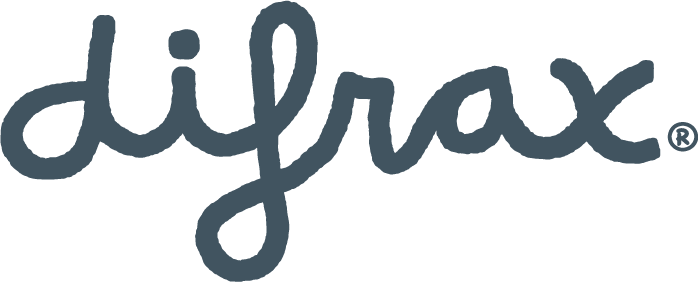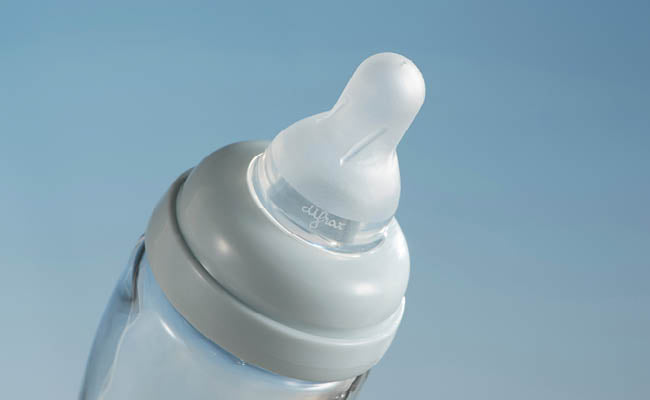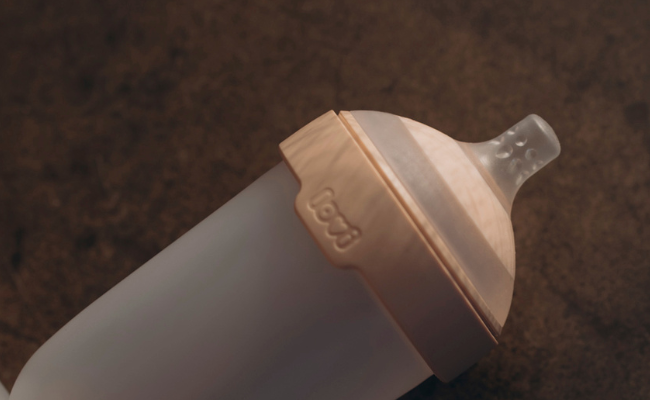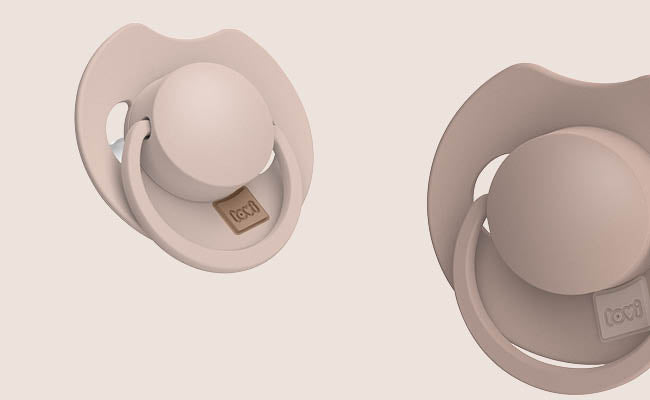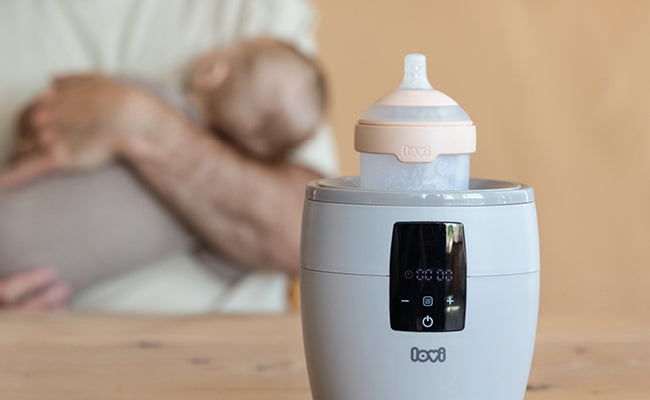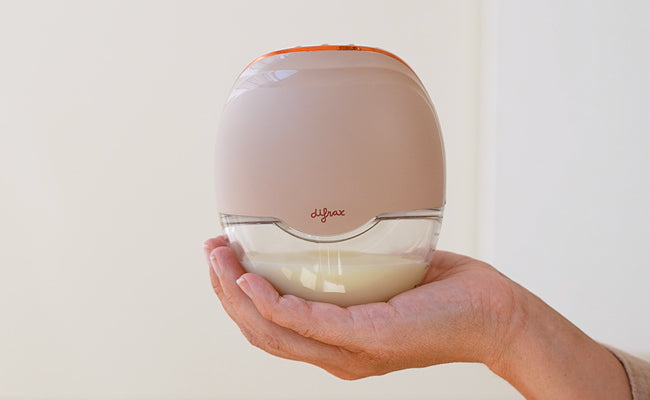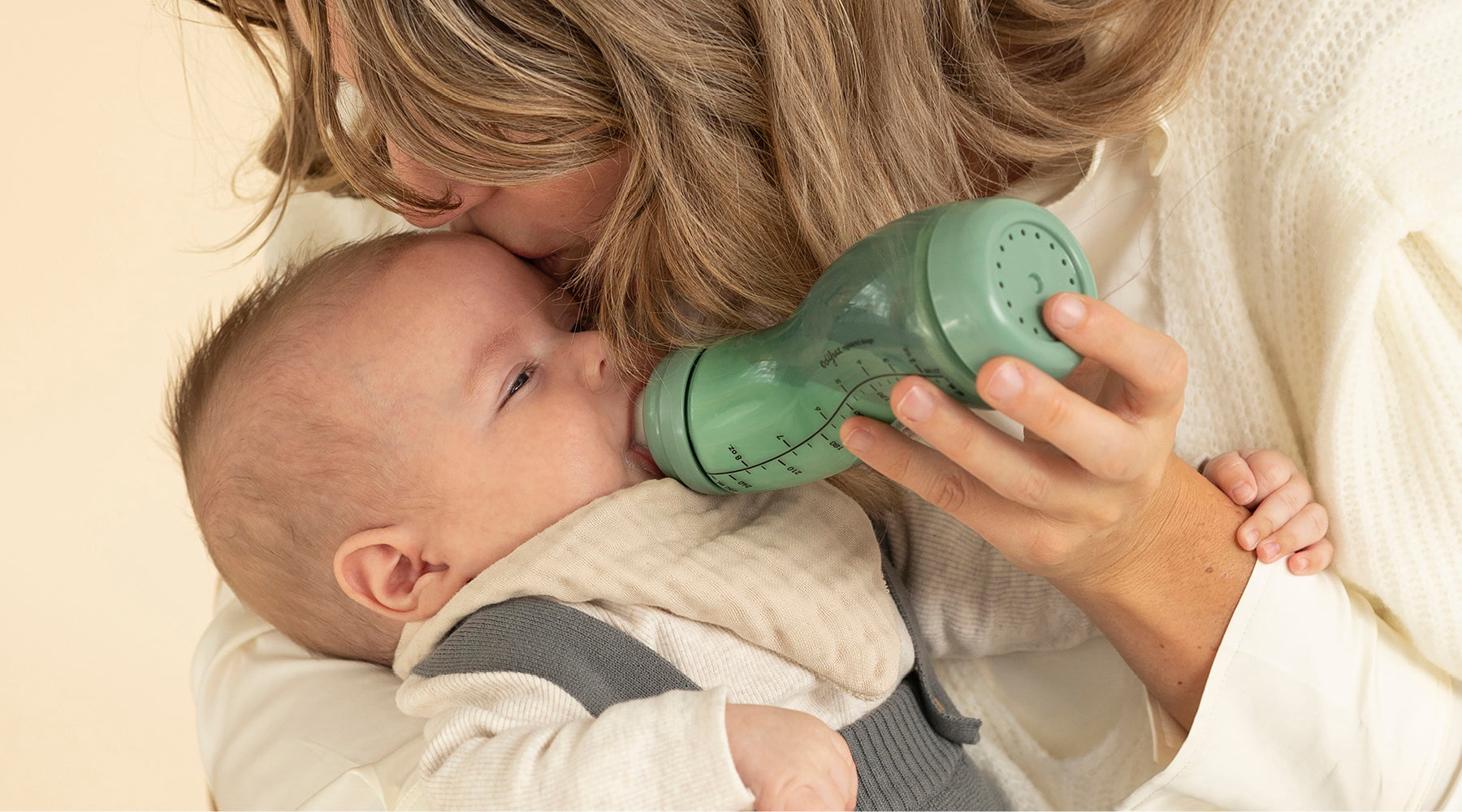
Baby feeding: this is what you need to know about a baby bottle
Hooray your baby is born! In the first few days after giving birth, you'll notice that your baby is giving a lot of signals to drink. For example, newborn babies make a sucking movement of the lips, suck on their fingers, show restlessness, cry or wave their arms and legs. A baby's stomach is very small at first and can only hold 5-10 ml. Feeding is therefore done every 3 hours, because your baby is experiencing a feeling of hunger. Sleep, poop and drink, this is what the first weeks look like. Perhaps you are now in the middle of it or it's still awaiting you.
Maybe you want to start breastfeeding or maybe you opt for bottle feeding. In addition to breastfeeding, bottle feeding is a nice addition that you can already start from six weeks. This can be done with pumped milk, so that your partner, grandparent or day-care giver can feed the baby. There are different types and sizes of baby bottles. What should you pay attention to? And what is an anti-colic system anyway? The answers to these and other frequently asked questions by parents before they discovered the Difrax S-bottle can be read below.
I see different brands of baby bottles; what makes the Difrax S-bottle unique?
When bottle feeding, it is important that the formula flows from the bottle evenly and without air. The Difrax baby bottle has been specially developed with medical specialists to help babies and parents achieve this. The anti-colic valve and unique S-shape ensure a constant flow of bottle feed, so air in the feed has no chance. The less air, the less your baby's chances of intestinal cramps. The anti-colic valve is in the bottom of the bottle where you want the necessary air. In many other bottles, you'll find the valve at the front of the baby bottle, allowing the air to mix with the formula so your baby swallows more air. There's a reason that the Difrax S-bottle Natural 250 ml is the most sold baby bottle in the Netherlands. A firm favourite among (new) parents!
When do I start using a baby bottle?
Sooner or later, a large proportion of babies will have to deal with a bottle. This can be after a full breastfeeding period, combined during a breastfeeding period or you start giving formula right away. The time to introduce a bottle introduction varies from family to family. Your baby may have to get used to drinking from a bottle drink when he/she is used to the breast. So be sure to start introducing a bottle on time. You don't know in advance whether your baby will find this difficult. This way, you can avoid stress when you have to go back to work and your baby still doesn't accept the bottle. The Difrax S-bottle can be used from birth.
Can I breastfeed alongside bottle feeding?
A bottle can certainly be given in combination with breastfeeding. In fact, in hospitals where there is a lot of focus on breastfeeding, they like to use the Difrax S-bottle. Are you going to do a combination of breastfeeding and bottle feeding? Then only start with the bottle when breastfeeding is well underway and your baby drinks well from the breast. On average this can already be after 6 to 8 weeks.
An anti-colic system; how does that work exactly?
An anti-colic valve prevents a vacuum in the bottle and ensures a steady flow of feed. Without a valve, the bottle is a closed system from which no more feed comes out when your baby sucks on the teat. The Difrax valve has a central opening to allow the necessary air to circulate above the feed. Difrax only uses valves made of 100% silicone. These are extra strong and durable in use. Thanks to the round and flat shape, the valve is easy to clean to give bacteria no chance. Occasionally it is necessary to replace the valves, which are of course available separately.
The S-shape; beautiful! But does it have any specific function?
The S-bottle is the first baby bottle that not only ensures an ideal drinking position for your baby, but at the same time encourages a relaxed sitting position for you as a parent. This iconic shape lies relaxed in your hand and the feed flows even with small amounts to the teat. You never have to hold the bottle completely upright, as with straight bottles. The curvature will always ensure milk in the teat.
What parts does the S-bottle consist of and what are they for?
- Measuring cap
The cap of the bottle has a calibrated measuring scale with 10, 20 and 30 ml. Handy for measuring out small amounts of feed. You can also easily check how much milk your child has left.
2. Bottle teat soft coating for extra grip
The teat of the bottle is made of extra-soft silicone. This soft coating is BPA-free, odourless and taste-free and ensures a good suction grip. As standard, the S-bottle comes with a size S Natural teat. The Natural teat is nipple-shaped for easy and quick acceptance. The teat is also available separately available in sizes M and L. And even in a 1-2-3 variant, for dosing the feed.
3. Ergonomic S-shape
The S-shape ensures a natural position during feeding. The same position as when breastfeeding. In addition, the teat always remains filled with milk (even for smaller quantities).
4. Anti-colic valve
The anti-colic valve prevents the bottle from creating a vacuum and keeps the air separated from the milk. Your baby swallows less air and therefore suffers less colic after feeding.
5. Screw-off base with ventilation holes
The base of the S-bottle can be unscrewed. The opening at the base is extra large for ease of use. You can also fill your bottle from the base!
Materials
The S-bottle is available in polypropylene (plastic) and in glass. Polypropylene is fully recyclable, 100% safe, BPA-free and contains no plasticisers. Furthermore, this material can withstand large temperature differences, does not harbour bacteria and fungus and can be steam sterilised. The glass bottle can withstand large temperature differences and lasts long. To compare: this type of glass is also used in a laboratory. In addition, the borosilicate glass is 100% recyclable.
How many baby bottles should I own?
That depends on whether you will breastfeed full-time first start with. Is this the case? Then you will need fewer bottles at first. Will you bottle-feed from day one? Then you will need a few more right away. To give you a guideline: make sure you have a supply of five baby bottles. In the first weeks your baby will need 8 to 10 feeds a day. This means you use the baby bottles intensively. After a few months, the frequency decreases as your baby can drink more at a time and is thus satiated for longer. Tip! It is good to keep a spare bottle close at hand for when your child goes to daycare or to grandma and grandpa's. We think with you and have a starter set in our range. This set is the ideal basic package to begin with.
What size bottle do I need?
Many parents like to use a small baby bottle in the first period (around 3 months), such as the 170 ml bottle. In the beginning, you still give your baby little feed at a time. After time, the feed will increase and you will need a larger bottle. The 250 ml bottle is ideal for this. Should the feed become even larger, there is even a 310 ml bottle. This will also come in handy for porridge. But that is for later, you don't need to remember this now!
How do I fill a bottle?
- Fill the S-bottle with water through the top. Read the measuring indication before measuring.
2. Heat the baby bottle between 30 and 35°C.
3. Screw the teat onto the bottle.
4. If you have a sealing cap, first put it between the opening of the bottle and the teat. If you don't have one, use the leak proof cap that always comes with the bottle.
5. Then turn the bottle over.
6. Unscrew the base and fill the bottle with the milk powder through the wide base.
7. Stir and ready!
Tip: The wide opening in the base of the S-bottle is ideal for use with frozen cubes of pumped breast milk.
How do I clean a bottle?
First rinse the bottle, teat and other parts with cold water to prevent the clotting of proteins. Place in the top rack of the dishwasher and select a 55°C programme. You can also clean the bottle and its parts using the handy Difrax microwave steriliser, steam clean it in our bottle warmer, or wash it with our mild dishwashing liquid that has been specially developed for baby products.
What is the advantage of a glass bottle?
The glass anti-coli S-bottle is made of very strong and durable borosilicate glass. This glass is lighter than normal glass, safe and durable in use. The sturdy glass prevents prevent scratches or damage, in which bacteria can settle. As a result the glass S-bottle has an extra long lifetime. The sturdy glass is impact-resistant, but not unbreakable.
How often should I feed my baby?
In the first weeks, babies drink about 10 times a day (24 hours). From 6 months onwards your baby feeds about 6 times a day. If you are in doubt whether your baby is drinking enough, contact the infant welfare centre. Do you think it is because of the bottle? Make sure you use the right teat. Which teat do you need? We explain all about it here. Which teat should I choose?
How long does feeding actually take?
Your baby should take about 15-20 minutes to feed. Are you in doubt as to whether your child drinks too much or too little milk? Then seek advice from a lactation consultant. They can provide the right assessment and guidance for each situation.
Which feeding position is best?
This is very personal and can even differ from one feed to another. Is your baby very sleepy? Then a more active position (more upright) may work better than a lying Madonna position. Is your baby restless? Then the opposite applies. Whichever position you choose, the Difrax S-bottle allows you to feed in an ergonomic position. Thanks to the S-shape the teat always remains filled with milk. With a straight bottle, you tend to make an upward movement to keep the teat filled. This affects the position you and your child must adopt and the position of the teat in the mouth.
Will my baby accept the S-bottle easily?
The teat of the Difrax S-bottle has a high acceptance rate. The top of the teat fits comfortably in the mouth and the lips are easy to put around the base of the teat. For children who prefer a wide bite, Difrax also has a Wide bottle with Wide bottle teat. All Difrax teats have a soft coating. This non-slip coating gives your baby more grip while drinking.
Do you have any issues you encountered? Feel free to let us know! Then we can address them next time!
